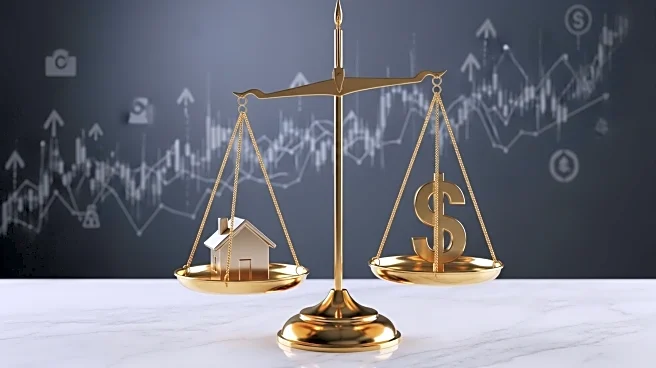What's Happening?
The Federal Reserve's recent decision to cut interest rates has generated optimism among investors, particularly in the small-cap and financial sectors. According to CNBC's Scott Wapner, the market is reacting positively to the rate cut, with investment experts like Josh Brown from Ritholtz suggesting that these sectors could benefit significantly. The 'Halftime Report' investment committee discussed the implications of the Fed's actions, highlighting potential opportunities for investors to capitalize on the favorable conditions created by lower interest rates.
Why It's Important?
Interest rate cuts by the Federal Reserve are crucial as they can stimulate economic growth by making borrowing cheaper, encouraging spending and investment. For small-cap companies, which often rely on borrowing to fund expansion, lower rates can reduce costs and improve profitability. Similarly, financial institutions may see increased activity as consumers and businesses take advantage of cheaper loans. This environment could lead to a boost in stock prices for these sectors, benefiting investors who strategically position themselves in anticipation of these trends.
What's Next?
Investors and market analysts will closely monitor the Federal Reserve's future actions, as further rate cuts could continue to influence market dynamics. Stakeholders in the small-cap and financial sectors may adjust their strategies to leverage the benefits of a low-interest-rate environment. Additionally, political leaders and policymakers might respond to the economic shifts prompted by the Fed's decisions, potentially impacting broader economic policies and regulations.
Beyond the Headlines
The Federal Reserve's rate cut also raises questions about the long-term implications for the U.S. economy. While short-term gains are expected, there is a risk of entering 'danger territory' if rates are eased excessively, as noted by investment experts. This could lead to inflationary pressures or asset bubbles, necessitating careful monitoring and strategic adjustments by both investors and policymakers.










